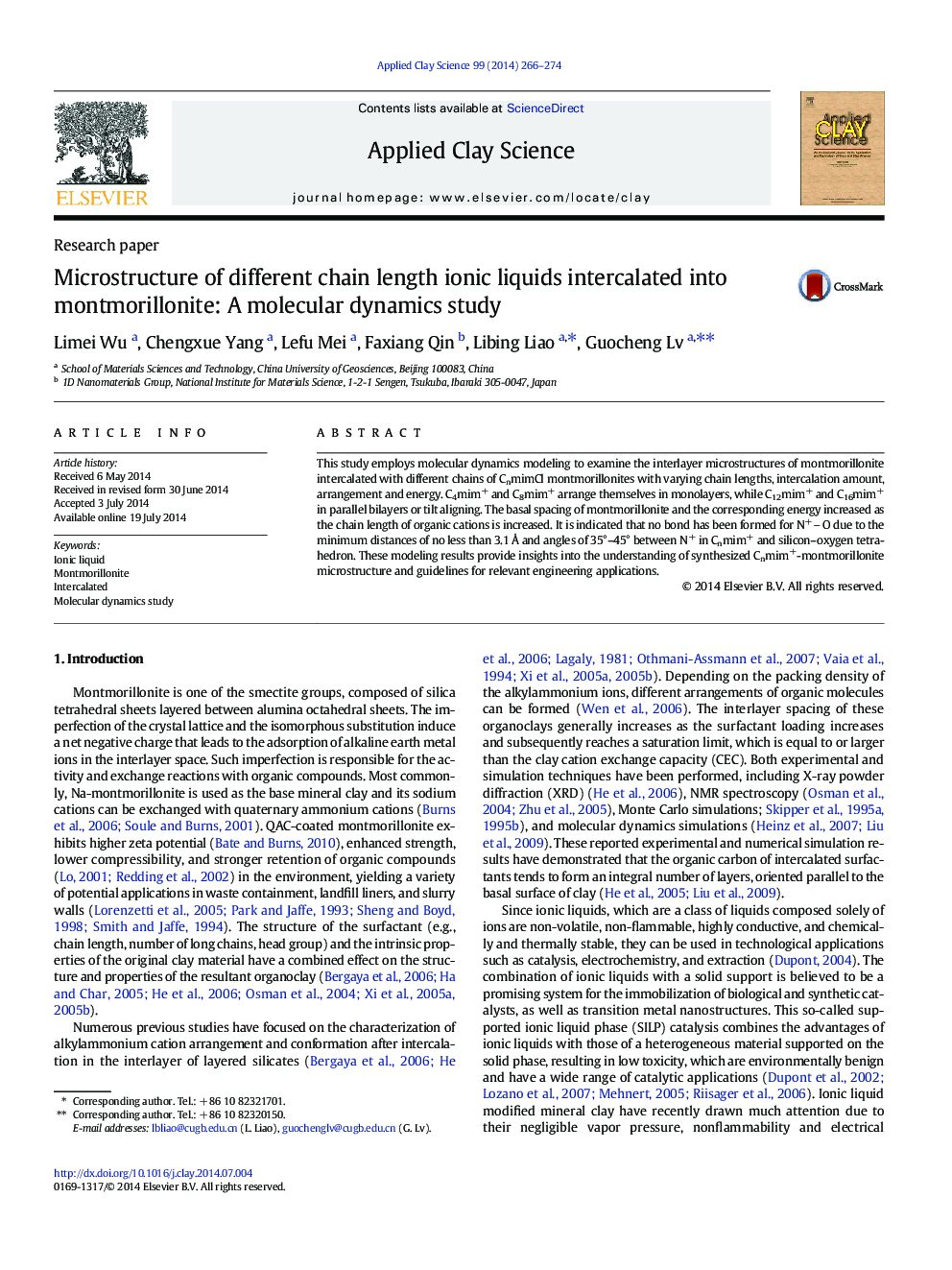| Article ID | Journal | Published Year | Pages | File Type |
|---|---|---|---|---|
| 1694759 | Applied Clay Science | 2014 | 9 Pages |
•Mechanism organic cations with different chain lengths intercalating into SWy-2 interlayer•The longer chain is favorable for stronger interaction and more stable structure.•N+ does not form a bond with oxygen upon organic cations intercalating SWy-2.
This study employs molecular dynamics modeling to examine the interlayer microstructures of montmorillonite intercalated with different chains of CnmimCl montmorillonites with varying chain lengths, intercalation amount, arrangement and energy. C4mim+ and C8mim+ arrange themselves in monolayers, while C12mim+ and C16mim+ in parallel bilayers or tilt aligning. The basal spacing of montmorillonite and the corresponding energy increased as the chain length of organic cations is increased. It is indicated that no bond has been formed for N+O due to the minimum distances of no less than 3.1 Å and angles of 35°–45° between N+ in Cnmim+ and silicon–oxygen tetrahedron. These modeling results provide insights into the understanding of synthesized Cnmim+-montmorillonite microstructure and guidelines for relevant engineering applications.
